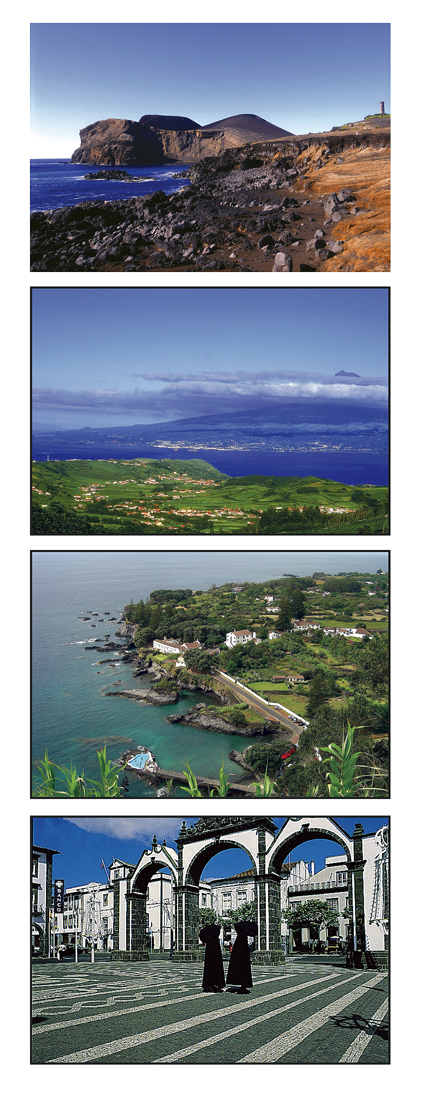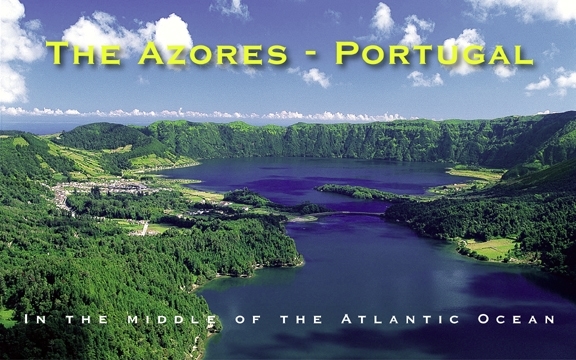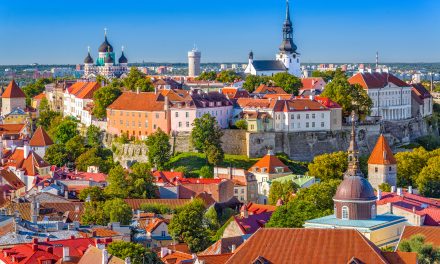The Azores – Portugal
In the middle of the Atlantic Ocean
 About midway between the east coast of the United States and mainland Portugal sits the Azores, a collection of nine islands scattered over several hundred nautical miles. The closest point to Europe from the United States, the Azores were once the one-and-only stopping-off point for ocean voyagers traveling between the two continents. Today, the Azores are an autonomous region of Portugal, even though they are more than 800 miles west of Portugal’s mainland. A direct flight from Boston to the Azores takes about four hours – shorter than a flight to Las Vegas or Aruba.
About midway between the east coast of the United States and mainland Portugal sits the Azores, a collection of nine islands scattered over several hundred nautical miles. The closest point to Europe from the United States, the Azores were once the one-and-only stopping-off point for ocean voyagers traveling between the two continents. Today, the Azores are an autonomous region of Portugal, even though they are more than 800 miles west of Portugal’s mainland. A direct flight from Boston to the Azores takes about four hours – shorter than a flight to Las Vegas or Aruba.
Because these once uninhabited, remote islands were settled sporadically over a span of two centuries, their culture, dialect, cuisine and traditions vary considerably from island to island. Farming and fishing are key industries that support the Azorean economy. These traditional trades give the Azores an unspoiled, historic and authentically European feel that is becoming harder to find in other nearby locations. Visitors find plenty to see and do here, with upscale lodging and restaurants integrating with both the tiny, rural towns and the sometimes wild and lush landscapes that make up the islands.
The Azores are, without question, some of the most beautiful islands in the world… and yet they remain a closely-guarded secret by tourists in the know. Visitors are still discovering the Azores, and only 240,000 Azoreans live within the archipelago’s 868 square miles.
Although the Azoreans speak Portuguese, travelers can always find someone who speaks English and residents are always happy to help.
The Azores have recently earned several accolades for their exceptional travel and tourism experiences:
•The National Geographic Center for Sustainable Destinations named the Azores as the world’s second most appealing islands destination
•One of 10 Best Values, USA Today
•Top 10 Places for Whale Watching, Sherman’s Travel
•Top 10 Islands You Never Heard Of, Budget Travel
•Two World Heritage Sites, designated by the United Nations Educational, Scientific and Cultural Organization (UNESCO)
The Azores’ year-round mild climate gives the islands a fresh, springlike quality no matter when you visit. No matter what the weather back home, it’s always between 57 and 71 degrees F in the Azores. Summer arrives in July and often stays until December. The lava-rich soils, fed by volcano eruptions of the past, nurture more than 1,200 species of plants, flowers and trees. The landscape varies from open fields lined with country roads to tiny towns perched on oceanfront cliffs.
The Azores are home to Portugal’s tallest mountain peak, the only tea plantations in Europe, dozens of crater lakes, miles of rocky coastlines, popular – and politically correct – bullfights, and some 6,000 pineapple plantations.
The islands were created by volcanic activity millions of years ago, giving them a landscape that is varied and often dramatic. Rocky cliffs, crater lakes, geysers, waterfalls and lava caves are all remnants of Mother Nature’s historical touch, and all make for excellent exploring opportunities for today’s visitor.
In the harbor towns, visitors can watch the day’s catch hauled in from the fishing boats, count the yachts that have sailed into port for the evening and stay in the manor homes and inns that may have once been the luxurious residences of wealthy sea-faring traders. The cities tell stories about the Azores’ prosperous history during the time of Portugal’s great explorations. Churches and town halls are built in varied styles including Gothic, Baroque, Manueline and classical architecture, evoking an old-world charm with new world functionality.
Visitors have the opportunity to learn about the 19th century history of whaling in the Azores, when expeditions from the Americas would stop to recruit crew-members and teach the locals the art of scrimshaw and whalebone-carving. While whaling is no longer an industry, whale watching opportunities are abundant. An adventurous visitor can see these marine giants up close and personal with the help of trained guides piloting fast, inflatable boats.
The Azores sit at the very spot where the tectonic plates for Europe, Africa and North America meet. The nine islands of the archipelago are divided into three groups:
Eastern: São Miguel and Santa Maria
Central: Terceira, Graciosa, São Jorge, Pico and Faial
Western: Corvo and Flores.
The Azores offer visitors a number of innovative lodging options, with the option to choose from a number of inns and hotels that were once the palaces, manor homes and monasteries that made up the rich history of the region.
The Azores are also the perfect spot for the adventurer in you. Water sports, yachting, fishing and whale watching are widely available. Equally popular are horseback riding, cycling and hiking.
Getting to The Azores
Direct flights to the Azores from Boston, Oakland and Toronot are available only through Azores Express, a U.S.-based tour operator and member of the SATA Group. For information and reservations, call Azores Express at 800-762-9995, or visit: www.sata.pt






